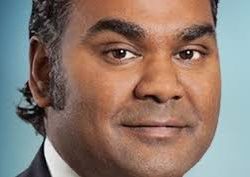
Environmental, social and governance strategies will be the fastest growing segment in European exchange-traded fund issuance this year according to asset manager Franklin Templeton.
Jason Xavier, head of EMEA ETF capital markets at Franklin Templeton, said in a blog that ESG-focused ETFs dominated the growth rate in Europe last year.
Investors’ appetite across the globe for ETFs was strong in 2019 and shows little sign of slowing, according to our Jason Xavier. Read more: https://t.co/Ntdid0EU4e
— Franklin Templeton (@FTI_Global) January 22, 2020
“Last year ESG-focused ETF assets under management grew by $16bn [€14.4bn] in Europe, a 150% increase, to take European ESG assets to $33bn from approximately $12bn at the end of 2018,” he wrote.
Global ESG and responsible investing ETFs reached a record last year according BlackRock’s Global ETP Landscape at 31 December 2019. BlackRock said they gathered $21.8bn of assets, up from $7.6bn in 2018. Socially responsible investing was the most popular subcategory within sustainable investing, with $10.5bn added across equity and fixed income.
Fixed income
Xavier noted that ESG products had the fastest growth rate in Europe last year but fixed income ETFs gathered the largest amount of assets.
“European fixed income ETFs grew at a higher rate of almost 54% last year to end the year at approximately $260bn in assets under management, outpacing equity ETF growth for the region,” he added.
He predicted that more investors will adopt the use of fixed income ETFs in their portfolio construction, which is also an asset class where Franklin Templeton thinks active management can shine.
“Active fixed income ETFs in Europe will surpass $15bn in 2020,” said Xavier.
BlackRock said 2019 was a record year for fixed income ETFs globally, especially in investment grade.
“The $257.3bn added in 2019 is the largest yearly inflow on record, and almost double the inflows in 2018 ($132.1bn),” said BlackRock.
Factor ETF strategies
Xavier said factor-based or smart beta ETFs have dominated passive ETF annualised growth rates in Europe over the last 10 years. Smart beta products do not track a standard market index which is weighted by market cap, but allow investors to track factors such as dividends or low volatility.
“Smart beta ETFs grew over 145% last year, having slowed in 2018,’ he added. “Over the last 10 years, the sub-sector has grown at a compound annual growth rate of 34%, illustrating the wider adoption by investors seeking more diverse fundamental drivers to help shape their investment allocations.”
BlackRock said 2019 was also a standout year for factor ETPs, which gathered $71.2bn globally.
“At an absolute level, most money went into US-listed ETPs ($58.5bn), but this shouldn’t detract from the 2.8x growth in EMEA-listed factor ETPs, which gained $10.1bn,” BlackRock added.
Trading Challenges
Greenwich Associates agreed there will be increasing demand for newer products such as factor-based ETFs and funds with an ESG focus. The consultancy said 39% of equity ETF investors and 41% of bond ETF investors plan to increase ETF allocations according to its survey of 181 institutional investors in the US.
As a result, overall ETF notional volume traded has increased from 6.4% of a buy-side desk’s total volume to 10.4% over the last three years according to a new report from the consultancy.
*New* Present New Challenges for Equity Trading Desks https://t.co/fW6K1KQgDV via @GreenwichAssoc by @GreenwichShane
— Greenwich Associates (@GreenwichAssoc) January 21, 2020
Shane Swanson, senior analyst for Greenwich Associates market structure and technology, said in the report that 55% of ETF flow is executed via standard channels such as a high-touch sales trader or a standard execution algorithm.
The rest is executed through specialist channels including request for quote platforms that aggregate liquidity from multiple dealers, specialist ETF desks that can source liquidity in the underlying components and create or redeem new ETF shares, and risk traders who can commit firm capital and execute the ETF order on a principal basis.
Swanson continued that as ETF volumes have increased, a majority of traders would like to use execution tools designed for ETFs.
“57% of traders would be interested in using an execution algorithm that is calibrated specifically for these types of securities,” he added. “This product would work differently from a standard execution algorithm to account for the various factors that drive ETF liquidity.”
ETF algos may be able to achieve better performance by monitoring price and volume signals from the underlying markets. He gave the example of a gold ETF which could improve trading performance by tracking the price of gold in spot and futures markets.
“The same is true for fixed-income ETFs, where price movements of the underlying securities create trading dynamics that differ from those of equity-tracking ETFs,” Swanson said.
There is also strong interest for trade analysis tools that account for the differences in ETFs. In addition, 60% of respondents said they would be interested in transaction cost analysis calibrated specifically for ETFs.
“While we are not aware of specific tools in the market at this time, they would likely be met with a favorable reception,” added Swanson. “We suspect that such analytics are being deployed by the largest ETF trading firms, including liquidity takers and makers, but all developed in-house.”








